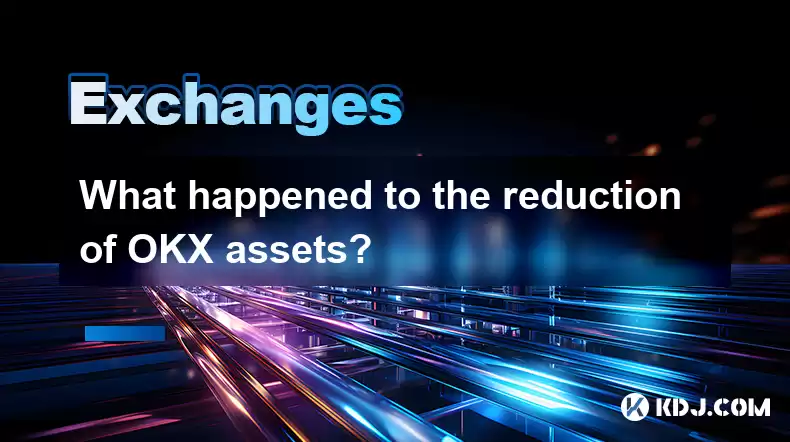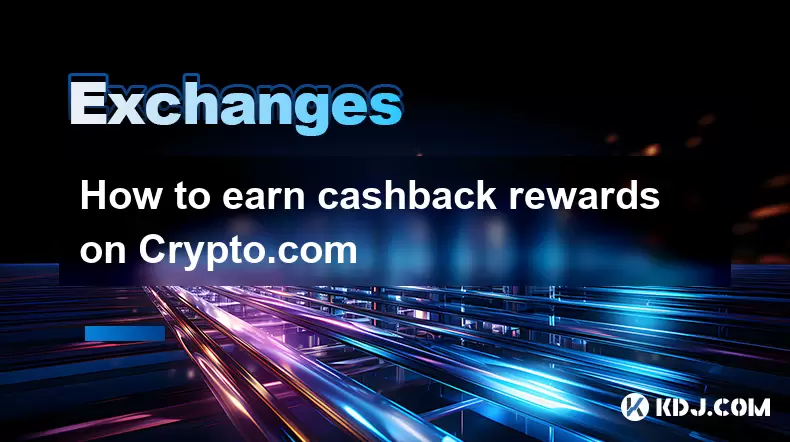-
 Bitcoin
Bitcoin $119000
0.28% -
 Ethereum
Ethereum $4253
0.54% -
 XRP
XRP $3.161
-1.05% -
 Tether USDt
Tether USDt $1.000
0.00% -
 BNB
BNB $806.8
0.47% -
 Solana
Solana $176.5
-3.65% -
 USDC
USDC $0.9998
-0.01% -
 Dogecoin
Dogecoin $0.2275
-2.94% -
 TRON
TRON $0.3451
1.78% -
 Cardano
Cardano $0.7832
-2.29% -
 Hyperliquid
Hyperliquid $43.70
-3.27% -
 Chainlink
Chainlink $21.35
-3.19% -
 Stellar
Stellar $0.4339
-2.40% -
 Sui
Sui $3.698
-4.47% -
 Bitcoin Cash
Bitcoin Cash $583.7
2.30% -
 Hedera
Hedera $0.2473
-4.64% -
 Ethena USDe
Ethena USDe $1.001
-0.01% -
 Avalanche
Avalanche $23.19
-2.62% -
 Litecoin
Litecoin $121.2
-2.65% -
 Toncoin
Toncoin $3.391
1.68% -
 UNUS SED LEO
UNUS SED LEO $8.976
-0.59% -
 Shiba Inu
Shiba Inu $0.00001309
-3.92% -
 Uniswap
Uniswap $11.15
2.07% -
 Polkadot
Polkadot $3.906
-3.79% -
 Cronos
Cronos $0.1667
2.30% -
 Dai
Dai $1.000
0.00% -
 Ethena
Ethena $0.7962
2.90% -
 Monero
Monero $276.4
2.88% -
 Bitget Token
Bitget Token $4.402
-0.97% -
 Pepe
Pepe $0.00001145
-5.13%
What happened to the reduction of OKX assets?
OKX's asset reduction stems from withdrawals exceeding deposits, reflecting market trends and impacting user confidence; while not automatically indicating insolvency, transparency and the exchange's response are crucial for assessing its stability.
Mar 18, 2025 at 08:07 pm

Key Points:
- The reduction in OKX assets is primarily attributed to user withdrawals exceeding deposits over a period of time, reflecting broader market trends and specific events impacting user confidence.
- The decrease doesn't necessarily indicate insolvency, but rather a shift in user liquidity preferences.
- Transparency regarding asset holdings is crucial for maintaining user trust, and OKX's response to the situation is a key factor in assessing its stability.
- Market sentiment plays a significant role in influencing user behavior and the perceived stability of exchanges.
- Regulatory scrutiny and potential legal challenges can also contribute to asset reductions on exchanges.
What Happened to the Reduction of OKX Assets?
The recent observed decrease in OKX's reported assets has sparked considerable discussion within the cryptocurrency community. While the exchange hasn't explicitly stated a single cause, several contributing factors likely played a role. The most significant is the simple imbalance between user withdrawals and deposits. When more users withdraw funds than deposit them, the exchange's total assets naturally decrease. This is a normal occurrence for exchanges, but the magnitude of the recent reduction has raised concerns.
This outflow of funds isn't necessarily a sign of imminent failure. Many factors influence user behavior, including broader market trends. Periods of market uncertainty often lead to users moving their assets to self-custody wallets or to exchanges perceived as more stable. Specific events, such as regulatory announcements or negative news concerning the exchange itself, can also trigger significant withdrawals.
The lack of complete transparency surrounding the exact nature and scale of the asset reduction has fuelled speculation. Cryptocurrency exchanges operate under a degree of opacity compared to traditional financial institutions. While OKX publishes some data on its reserves, a comprehensive, independently audited breakdown isn't always readily available. This lack of transparency is a common concern across the industry, impacting user trust and contributing to uncertainty during periods of asset reduction.
Furthermore, the general sentiment within the cryptocurrency market plays a pivotal role. Negative news, regulatory crackdowns, or even rumors can significantly impact user confidence, leading to mass withdrawals and a subsequent decrease in an exchange's assets. This highlights the interconnectedness of the crypto market and the susceptibility of even large exchanges to fluctuations in overall market sentiment.
Regulatory pressures and potential legal challenges can also indirectly contribute to asset reductions. Investigations or lawsuits against an exchange can erode user confidence, leading to withdrawals. The legal landscape surrounding cryptocurrency is constantly evolving, and regulatory uncertainty can create an environment where users prefer to hold their assets elsewhere. The ongoing regulatory scrutiny faced by many cryptocurrency exchanges globally adds another layer of complexity to understanding the dynamics of asset reductions.
The nature of cryptocurrency exchanges involves a constant flow of assets. Users deposit and withdraw funds regularly. A reduction in assets doesn't automatically equate to insolvency. However, the scale and speed of the reduction, coupled with a lack of complete transparency from the exchange, are the primary reasons for concern. Understanding the reasons behind these fluctuations requires considering both the internal operations of the exchange and the external forces impacting the broader cryptocurrency market.
Analyzing the situation requires looking beyond simple asset numbers. The liquidity of the exchange, its ability to meet withdrawal requests promptly, and its overall operational efficiency are crucial factors to consider. The exchange's response to the situation, including any measures taken to address user concerns and maintain operational stability, is also critical in assessing its long-term viability.
The complexity of the cryptocurrency market necessitates a nuanced approach to understanding asset reductions on exchanges. It's crucial to distinguish between normal fluctuations and situations that indicate genuine financial distress. The interplay of user behavior, market sentiment, regulatory pressures, and the internal management of the exchange all contribute to the observed changes in asset holdings. The information provided by the exchange itself, along with independent analysis of market trends, is crucial for informed assessment.
The reduction in assets at OKX, like similar events at other exchanges, underscores the inherent risks associated with entrusting assets to centralized platforms. Diversification of assets across multiple exchanges or employing self-custody solutions are often cited as strategies to mitigate these risks. Staying informed about market developments, regulatory changes, and the financial health of exchanges remains paramount for all cryptocurrency investors.
Frequently Asked Questions:
Q: Does a reduction in OKX assets mean the exchange is insolvent?
A: Not necessarily. A reduction in assets can result from a variety of factors, including users withdrawing funds, which is a normal part of exchange operations. Insolvency would be indicated by an inability to meet withdrawal requests.
Q: What steps can OKX take to regain user trust after a significant asset reduction?
A: Increased transparency regarding reserves, independent audits, clear communication with users, and potentially implementing measures to improve liquidity and operational efficiency are crucial steps.
Q: How does market sentiment impact asset reductions on cryptocurrency exchanges?
A: Negative news, regulatory uncertainty, or even rumors can trigger mass withdrawals, leading to a significant decrease in exchange assets, as users seek to secure their holdings.
Q: What are the regulatory implications of significant asset reductions on exchanges?
A: Significant asset reductions can trigger regulatory scrutiny and potential investigations, particularly if they indicate financial instability or raise concerns about the security of user funds.
Q: Are there ways to mitigate the risk of asset reductions on exchanges?
A: Diversifying assets across multiple exchanges, using self-custody wallets for a portion of holdings, and closely monitoring the financial health and reputation of exchanges are strategies to mitigate risk.
Disclaimer:info@kdj.com
The information provided is not trading advice. kdj.com does not assume any responsibility for any investments made based on the information provided in this article. Cryptocurrencies are highly volatile and it is highly recommended that you invest with caution after thorough research!
If you believe that the content used on this website infringes your copyright, please contact us immediately (info@kdj.com) and we will delete it promptly.
- INJ ETF, Crypto Future, and Uncertainty: Navigating the Murky Waters
- 2025-08-12 02:50:12
- Cold Wallet, Litecoin, HBAR Outlook: Navigating Crypto Trends in 2024
- 2025-08-12 03:30:12
- Dogecoin's Wild Ride: EMAs, Support Levels, and What's Next for the Meme Coin
- 2025-08-12 04:10:13
- Layer Brett, Solana, and Staking Rewards: Chasing the Next Crypto Moonshot
- 2025-08-12 04:10:13
- Ruvi AI: The Presale Gem Poised for 100x Gains?
- 2025-08-12 02:50:12
- Bitcoin, Solana, MAGACOIN FINANCE: Navigating the 2025 Crypto Landscape
- 2025-08-12 00:30:13
Related knowledge

How to use margin trading on Poloniex
Aug 08,2025 at 09:50am
Understanding Margin Trading on Poloniex

How to read the order book on KuCoin
Aug 10,2025 at 03:21pm
Understanding the Order Book Interface on KuCoinWhen accessing the order book on KuCoin, users are presented with a real-time display of buy and sell ...

How to read the order book on KuCoin
Aug 12,2025 at 02:28am
Understanding the Basics of Staking in CryptocurrencyStaking is a fundamental concept in the world of blockchain and cryptocurrencies, particularly wi...

How to set price alerts on Kraken
Aug 11,2025 at 08:49pm
Understanding Price Alerts on KrakenPrice alerts on Kraken are tools that allow traders to monitor specific cryptocurrency pairs for price movements. ...

How to earn cashback rewards on Crypto.com
Aug 12,2025 at 02:08am
Understanding Cashback Rewards on Crypto.comCashback rewards on Crypto.com are a feature designed to incentivize users to spend using their Crypto.com...

How to use advanced trading on Gemini
Aug 08,2025 at 04:07am
Understanding Advanced Trading on GeminiAdvanced trading on Gemini refers to a suite of tools and order types designed for experienced traders who wan...

How to use margin trading on Poloniex
Aug 08,2025 at 09:50am
Understanding Margin Trading on Poloniex

How to read the order book on KuCoin
Aug 10,2025 at 03:21pm
Understanding the Order Book Interface on KuCoinWhen accessing the order book on KuCoin, users are presented with a real-time display of buy and sell ...

How to read the order book on KuCoin
Aug 12,2025 at 02:28am
Understanding the Basics of Staking in CryptocurrencyStaking is a fundamental concept in the world of blockchain and cryptocurrencies, particularly wi...

How to set price alerts on Kraken
Aug 11,2025 at 08:49pm
Understanding Price Alerts on KrakenPrice alerts on Kraken are tools that allow traders to monitor specific cryptocurrency pairs for price movements. ...

How to earn cashback rewards on Crypto.com
Aug 12,2025 at 02:08am
Understanding Cashback Rewards on Crypto.comCashback rewards on Crypto.com are a feature designed to incentivize users to spend using their Crypto.com...

How to use advanced trading on Gemini
Aug 08,2025 at 04:07am
Understanding Advanced Trading on GeminiAdvanced trading on Gemini refers to a suite of tools and order types designed for experienced traders who wan...
See all articles

























































































